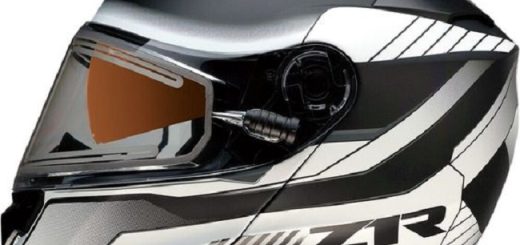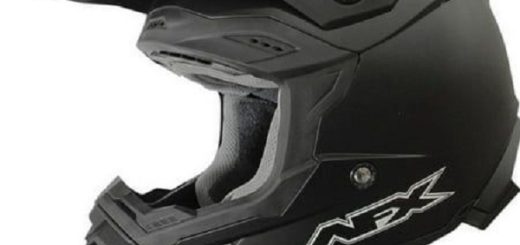A Look at When Helmets Were Invented and How They Evolved
For millennia, humans have recognized the importance of protecting their heads. From the earliest battles to modern construction sites, helmets have served as a vital line of defense against injury. But when were helmets invented, and how have they transformed throughout history?
Ancient Origins: The First Helmets (2500 BC – 476 AD)
The exact origins of helmets remain shrouded in mystery. Archaeological evidence suggests various civilizations used head protection as early as 2500 BC. These early helmets were likely crafted from readily available materials like leather, bone, and even thick cloth.

- Mesopotamia (2300 BC): Assyrian soldiers donned helmets constructed from leather and bronze, offering basic protection against blunt weapons.
- Ancient Egypt (2000 BC): Pharaohs and warriors wore leather helmets, sometimes reinforced with metal, for ceremonial purposes and combat.
- Ancient Greece (700 BC – 146 BC): Greek hoplites, the heavy infantry of the era, sported bronze helmets (often adorned with elaborate crests) that shielded their heads and necks.
- Ancient Rome (753 BC – 476 AD): Roman legionaries utilized Montefortino helmets, featuring a bowl design made of bronze or iron for battlefield protection.
The Middle Ages: A Period of Innovation (476 AD – 1450 AD)
The Middle Ages witnessed significant advancements in helmet design. Knights, the dominant military force, wore increasingly sophisticated helmets tailored for specific purposes.
- Migration Period (400 AD – 800 AD): Migration-era helmets, like the Spangenhelm, offered protection for the face and neck with a nasal guard.
- Viking Age (793 AD – 1066 AD): Viking helmets, though often depicted with horns in popular culture, were typically simple leather or iron caps for practicality.
- High Middle Ages (1066 AD – 1300 AD): The Norman helmet, with its nasal guard and conical shape, became a prevalent design during this period.
- Late Middle Ages (1300 AD – 1500 AD): The evolution of plate armor led to the development of closed helmets, such as the bascinet and the iconic jousting helmet.
The Renaissance and Beyond: Specialization and Refinement (1450 AD – 1900 AD)
The Renaissance ushered in a new era of warfare, with firearms playing an increasingly prominent role. Helmets adapted to these changes, becoming lighter and more specialized.

- Renaissance (14th century – 16th century): Morion and Burgonet helmets emerged, offering better visibility for firearms use.
- 17th and 18th Centuries: Lobster tail helmets, with their distinctive segmented design, provided protection for cavalry troops.
- 19th Century: Pith helmets, made from lightweight materials like cork or straw, became popular for military use in hot climates.
The Modern Era: Helmets for a Technological Age (1900 AD – Present)
The 20th century saw a revolution in helmet design, driven by advancements in materials science and safety concerns.
- World War I (1914-1918): The Brodie helmet, a steel helmet designed to protect against shrapnel, became standard issue for soldiers.
- World War II (1939-1945): The M1 helmet, a further refinement of the Brodie design, served as the primary helmet for American troops.
- Mid-20th Century: The invention of synthetic materials like ABS plastic led to the development of lighter and more comfortable helmets for various applications, including cycling and construction.
- Late 20th Century – Present: Modern helmets continue to evolve, incorporating advanced materials and technologies to provide superior protection for athletes, motorcyclists, and industrial workers.
Beyond Protection: The Cultural Significance of Helmets
Helmets have transcended their utilitarian purpose to become ingrained in various cultures.

- Symbol of Status: Throughout history, elaborate helmet designs have served to denote social status and military rank.
- Religious Significance: Helmet often featured religious symbols or iconography, reflecting the wearer’s beliefs.
- Sporting Traditions: Helmets in sports like football and hockey have become integral to the game’s aesthetics and identity.
Finding the Perfect Helmet: Where to Look and What to Buy
With so many helmet options available, navigating the market can feel overwhelming. Here’s a guide to help you find the perfect helmet for your needs:
1. Identifying Your Needs:
The first step is to determine the activity you’ll be using the helmet for. Here are some common types:
- Bicycle Helmets: Look for helmets certified by the CPSC (Consumer Product Safety Commission) or Snell Memorial Foundation. These prioritize impact absorption and a snug fit.
- Motorcycle Helmet: Choose helmet that meet Department of Transportation (DOT) safety standards. Consider full-face helmet for maximum protection or ¾ helmet for a more open feel.
- Football Helmet: Look for helmet certified by the National Operating Committee on Standards for Athletic Equipment (NOCSAE). Proper fit is crucial to prevent injuries.
- Construction Helmets: Hard hats are essential for construction sites. Ensure they comply with ANSI (American National Standards Institute) standards.
- Ski & Snowboard Helmet: Look for helmet certified by ASTM (American Society for Testing and Materials). Consider features like ventilation and goggle compatibility.

2. Reputable Retailers:
Purchase your helmet from a reputable sporting goods store, motorcycle shop, or safety equipment supplier. These stores have knowledgeable staff who can help you find the right fit and answer any questions.
3. Trying Before You Buy:
A proper fit is paramount for optimal protection and comfort. Try on different helmet and adjust the straps to ensure a snug yet comfortable feel. The helmet shouldn’t rock or wobble when you move your head.
4. Additional Considerations:
- Ventilation: Look for helmet with vents for breathability, especially for activities that generate heat.
- Visors: Consider helmets with visors for added protection from sun, wind, or debris.
- Weight: Choose a lightweight helmet for activities where comfort is a priority, like cycling.
- Replacement Parts: Ensure the availability of replacement parts like pads or visors for long-term use.
Invest in Your Safety: Why Helmets Matter
Helmets are not just a safety precaution; they’re an essential piece of equipment for many activities. Here’s why investing in a good helmet is crucial:

- Reduces Risk of Head Injuries: Helmet absorb impact, significantly reducing the risk of severe head injuries during falls, accidents, or collisions.
- Promotes Confidence: Knowing you’re well-protected allows you to participate in activities with greater confidence and focus.
- Sets a Positive Example: Wearing a helmet encourages others to prioritize safety, fostering a more responsible environment.
Protecting What Matters Most
Throughout history, helmets have served as a testament to human ingenuity and our constant strive for safety. From the crude leather caps of ancient warriors to the high-tech helmet of today, these essential pieces of equipment have safeguarded countless lives. By understanding the evolution of helmet and prioritizing proper selection, you can ensure your head is protected during your next adventure.
Don’t wait for an accident to happen before investing in a helmet. Visit your local sports store or safety equipment supplier today to find the perfect helmet for your needs. Remember, your safety is paramount – prioritize protection and enjoy your activities with peace of mind.


